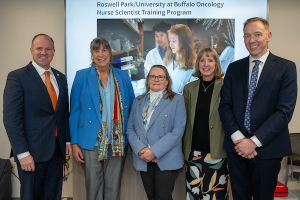To achieve equitable vaccine delivery, national immunization programs can use 2 main delivery platforms: routine immunization or supplementary immunization activities. With routine immunization programs, vaccines are delivered at fixed sites (typically health facilities) on a consistent schedule, with vaccines in low- and middle-income countries typically being made available periodically (daily, weekly, or monthly). On the other hand, supplementary immunization activity scheduling is often determined by disease burden, the need to respond to potential outbreaks, programmatic coverage needs, or global/regional control and elimination goals. In low- and middle-income countries, supplementary immunization activities are typically used to achieve specific goals, such as catching up people who were missed by routine immunization or achieving measles elimination or polio eradication.
The research published in Value in Health supports the use of supplementary immunization activities for measles. “We studied how routine immunization and supplementary immunization activity for the delivery of measles vaccines can differ using data from 20 low- and middle-income countries,” said author Allison Portnoy, postdoctoral fellow in the Center for Health Decision Science at Harvard T.H. Chan School of Public Health in Boston, MA, USA. “We found that supplementary immunization activities resulted in more equitable delivery across different socioeconomic groups about 65% of the time.” These results can enable a better description of the real-world impact of different delivery platforms in reducing health inequalities and improving equity at the global and local levels and can further highlight the important role that measles supplementary immunization activities can play in reaching children from poorer households.
“Supplementary immunization activities are vaccination campaigns that provide an additional vaccination opportunity to children of different ages regardless of their previous history of measles vaccination, complementing routine programs especially where health systems are weak and vaccination coverage is low,” said coauthor Stéphane Verguet, assistant professor of global health at Harvard T.H. Chan School of Public Health. “With equity considerations included in the public health impact, determining the appropriate mix of routine and supplementary immunization activity delivery necessary for measles control and elimination efforts can help achieve the necessary coverage levels for preventing measles cases and deaths and reach those levels equitably across socioeconomic groups.”
Despite previous progress toward measles elimination and control efforts, the incidence of measles has increased in 5 of 6 World Health Organization regions since 2016. Moreover, routine measles vaccination rates vary substantially, with vaccine coverage up to 4 times higher in the wealthiest quintiles compared with the poorest quintiles. Achieving vaccination coverage equitably is an important consideration for national programs, not only because of the stated policy priorities of equity in health but also owing to the often-higher disease burden in poorer households compared with richer households.
###
ABOUT ISPOR
ISPOR, the professional society for health economics and outcomes research (HEOR), is an international, multistakeholder, nonprofit dedicated to advancing HEOR excellence to improve decision making for health globally. The Society is the leading source for scientific conferences, peer-reviewed and MEDLINE®-indexed publications, good practices guidance, education, collaboration, and tools/resources in the field.
Website | LinkedIn | Twitter (@ispororg) | YouTube | Facebook | Instagram
ABOUT VALUE IN HEALTH
Value in Health (ISSN 1098-3015) is an international, indexed journal that publishes original research and health policy articles that advance the field of health economics and outcomes research to help healthcare leaders make evidence-based decisions. The journal’s 2019 impact factor score is 4.748. Value in Health is ranked 5th of 87 journals in health policy and services, 7th of 102 journals in healthcare sciences and services, and 19th of 371 journals in economics. Value in Health is a monthly publication that circulates to more than 10,000 readers around the world.
Website | Twitter (@isporjournals)
Original post https://alertarticles.info




